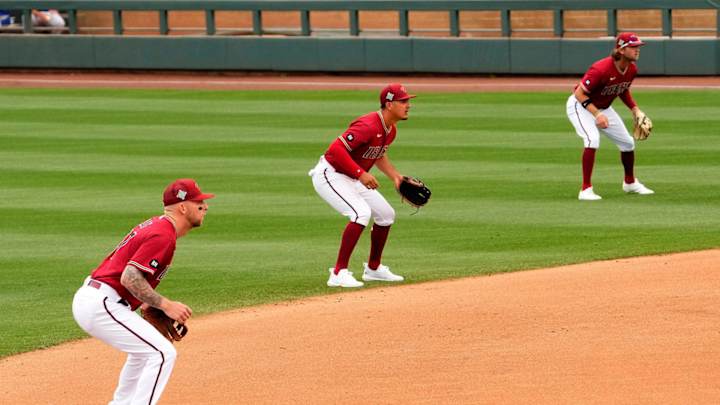How a Restriction on Shifts Impacts the Diamondbacks

In this story:
Major League Baseball has announced a series of rule changes that will be implemented for the 2023 season. The major rule changes include a pitch clock, bigger bases, and a limit to how far teams can shift their infielders. Jack goes more in depth on how adding a pitch clock will affect the game, so we're going to focus on the impact from restricting how teams can shift.
Here are the new rules governing how teams can position their infielders:
- Teams must have two infielders on each side of second base
- Infielders must be no deeper than the outer edge of the infield dirt when the pitcher begins his delivery
- Defenders cannot switch sides during the middle of an at-bat
- If infielders are not aligned properly when the pitcher begins his delivery, the hitter has the choice to either receive an automatic ball or take the result of the play
The extreme shifts, which have 3 infielders on one side of second base or 4 players positioned in the outfield grass, aren't necessarily exclusive to this generation of baseball players, but have become in vogue. Defensive alignments that featured 4 players in the outfield increased nearly 6 times since the 2018 season. Teams also switched defenders during the middle of an at-bat, which is not only a pace of play issue but also allowed teams to position their best defender based on where a hitter is most likely to put a ball in play based on the count. Eliminating that strategy may have a positive impact on pace and increase the amount of offense on the field simultaneously.
When looking at the Diamondbacks and seeing which hitters could benefit the most, the best place to start is checking the pull rates from the main players in the lineup.
| Batter | Pull Rate |
|---|---|
Daulton Varsho | 56.0% |
Ketel Marte | 44.5% |
Christian Walker | 42.0% |
Geraldo Perdomo | 40.7% |
Carson Kelly | 39.4% |
Alek Thomas | 35.7% |
Jake McCarthy | 33.5% |
Josh Rojas | 32.9% |
The player that stands to benefit the most is Daulton Varsho thanks to being both a left-handed hitter and an extreme pull rate. Noted shift-killers Josh Rojas and Jake McCarthy will see more batted balls turn into outs, potentially reducing their value or causing them to make major swing changes that might not be for the better.
The reduction on shifts will likely disproportionately reward left-handed pull hitters, as players such as Joey Gallo and Varsho will see their batting averages improve with more real estate for line drives and ground balls to land safely in the outfield. With better numbers across the board, those type of players will be rewarded more in arbitration salary raises and free agency contracts.
The other major domino effect of this rule change will be infield defense will be valued more, especially the ability to move well laterally, as they will need to cover more ground quickly. It will be much harder for teams to hide poor defenders since they cannot use the shift to mask their lack of range.
The Diamondbacks rank 14th in MLB with 19 runs saved with the shift in the 2022 season. Christian Walker and Emmanuel Rivera have been the team's best defensive infielders this season, with Statcast measuring the two at +13 and +5 outs above average (OAA) at the two corner infield spots. Both players grade positively when moving laterally, so their defense becomes more valuable.
The middle infielders have not graded as well, with Geraldo Perdomo, Ketel Marte, and Sergio Alcantara grading out at +2, -2, and -3 OAA. All three middle infielders are below average when it comes to converting plays where they have to move laterally, which could be exacerbated when they will be required to make more plays in those directions. As a team that doesn't have a lot of quality pitching, this could end up hurting them as their middle infielders are less able to convert plays.
The impact of these changes will be interesting to explore once the 2023 season unfolds in how teams construct their infield and how hitters perform with less shifts.
-36119d7a8ae794071d268ac48893b33f.PNG)
Michael McDermott is a writer for Arizona Diamondbacks On SI. Over the past 10 years, he's published thousands of articles on the Diamondbacks for SB Nation's AZ Snake Pit, Arizona Diamondbacks on SI, Burn City Sports, and FanSided's Venom Strikes. Most of his work includes game coverage, prospect coverage in the Arizona Fall League, and doing deep analytical dives on player performances. You can follow him on Twitter @MichaelMcDMLB
Follow MichaelMcDMLB